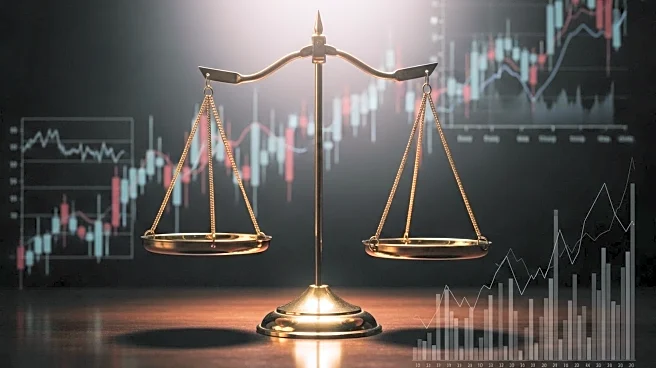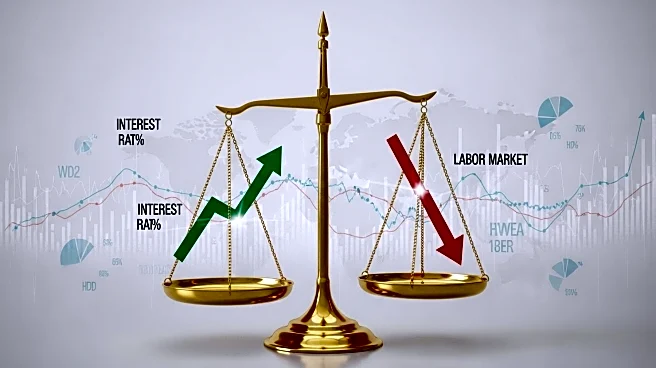What's Happening?
Ed Yardeni, a prominent market strategist and chief investment strategist at Yardeni Research, has expressed opposition to the anticipated Federal Reserve rate cut. Yardeni argues that the current economic conditions, characterized by solid productivity and growth in real GDP, do not warrant a reduction in interest rates. He suggests that stimulating an economy that does not require it could lead to financial instability, including a potential 'meltup' in stock prices. Despite the Labor Department's recent data showing a spike in jobless claims and a drop in wholesale inflation prices, Yardeni maintains that the economy is not weak enough to justify easier monetary policy. The Federal Reserve is set to begin its two-day policy meeting, with a decision expected soon, and market expectations indicate a high probability of at least a quarter-point rate cut.
Why It's Important?
The debate over the Federal Reserve's interest rate policy is significant as it impacts various economic stakeholders, including investors, businesses, and consumers. A rate cut could potentially boost stock markets and make borrowing cheaper, stimulating economic activity. However, Yardeni's concerns highlight the risks of financial instability and asset bubbles if rates are lowered unnecessarily. His perspective suggests that maintaining current rates could prevent overheating in the financial markets and ensure sustainable economic growth. The decision by the Federal Reserve will be closely watched as it could set the tone for future monetary policy and economic conditions.
What's Next?
The Federal Reserve's upcoming decision will be pivotal in determining the direction of U.S. monetary policy. If the Fed decides to cut rates, it may lead to short-term market gains but could also increase the risk of financial instability. Conversely, maintaining current rates might stabilize the financial system but could disappoint market participants expecting a cut. The Fed's decision will likely influence future economic policies and investor strategies, with potential reactions from political leaders and financial analysts.











